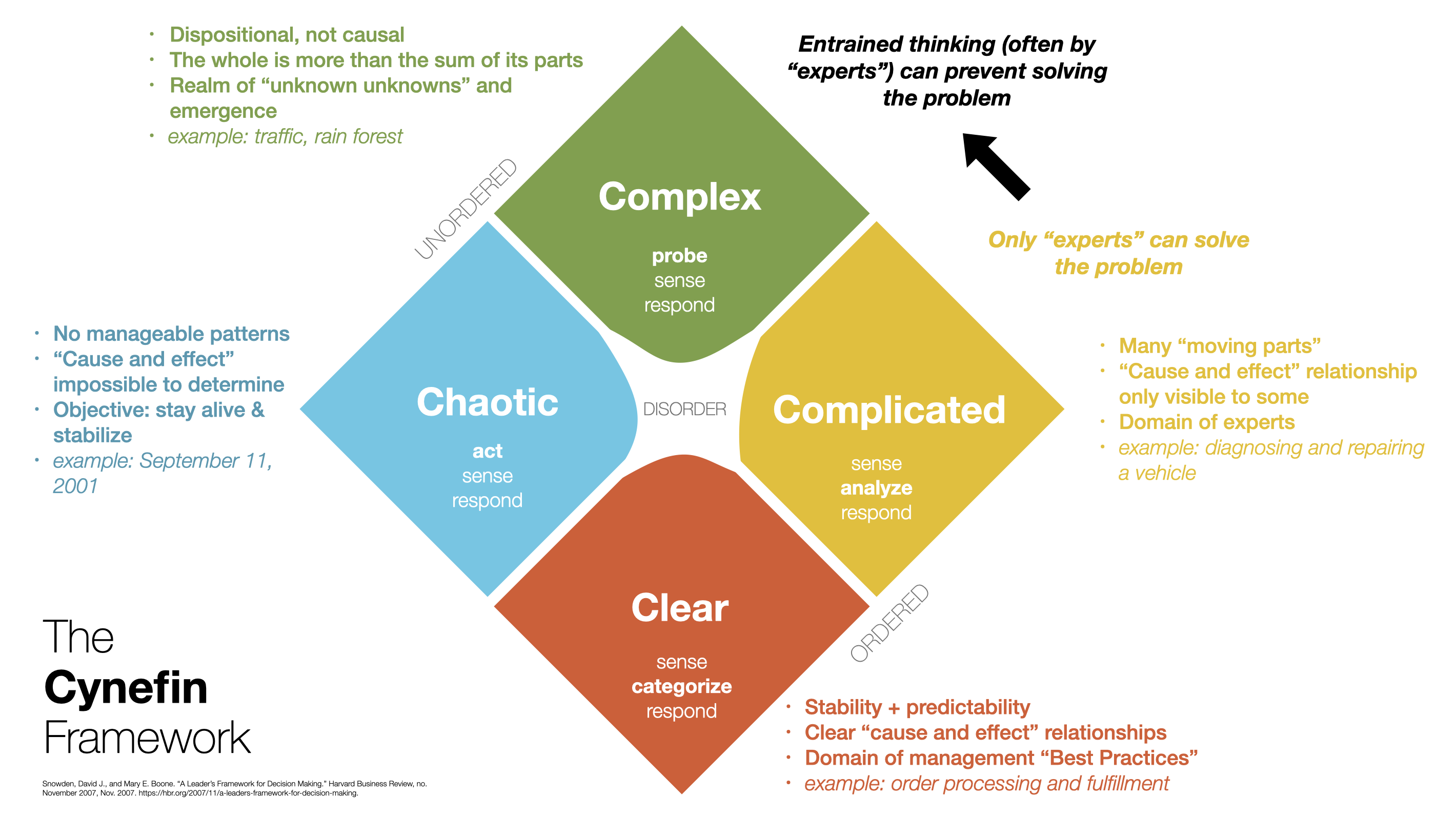Cynefin framework helps interpret systems
Cynefin is a sense-making framework for identifying and understanding the kind of problem space you are in, so as to guide decision-making and action.
Most of the information below is borrowed from “A Leader’s Framework for Decision Making” (Snowden and Boone). [1] See also: Cynefin – Snowden, et al. (2020)

- Simple and complicated contexts assume an ordered universe, where cause-and-effect relationships are perceptible, and right answers can be determined based on the facts.
- Complex and chaotic contexts are unordered—there is no immediately apparent relationship between cause and effect, and the way forward is determined based on emerging patterns.
The ordered world is the world of fact-based management; the unordered world represents pattern-based management.
Clear (or Simple) Contexts: The Domain of Best Practice
Simple contexts are characterized by stability and clear cause-and-effect relationships that are easily discernible by everyone.
Complicated Contexts: The Domain of Experts
Complicated contexts, unlike simple ones, may contain multiple right answers, and though there is a clear relationship between cause and effect, not everyone can see it.
Complex Contexts: The Domain of Emergence
In a complicated context, at least one right answer exists. In a complex context, however, right answers can’t be ferreted out.
Furthermore, solutions to complex problems are bespoke and so cannot be systematized or optimized, as in the example of raising children:
Complex problems are ones like raising a child. Once you learn how to send a rocket to the moon, you can repeat the process with other rockets and perfect it. One rocket is like another rocket. But not so with raising a child …. Every child is unique. Although raising one child may provide experience, it does not guarantee success with the next child.[2]
Chaotic Contexts: The Domain of Rapid Response
In a chaotic context, searching for right answers would be pointless: The relationships between cause and effect are impossible to determine because they shift constantly and no manageable patterns
.png)
#strategic #complexity #systems
see also:
- Complex systems exhibit emergent behavior
- Scale magnifies complexity
- Wicked problems are difficult or impossible to solve
- Strategic forecasting guides decision-making and catalyzes innovation
- Emergence is non-linear behavior of a system
Snowden, David J., and Mary E. Boone. “A Leader’s Framework for Decision Making.” Harvard Business Review, no. November 2007, Nov. 2007. https://hbr.org/2007/11/a-leaders-framework-for-decision-making. ↩︎